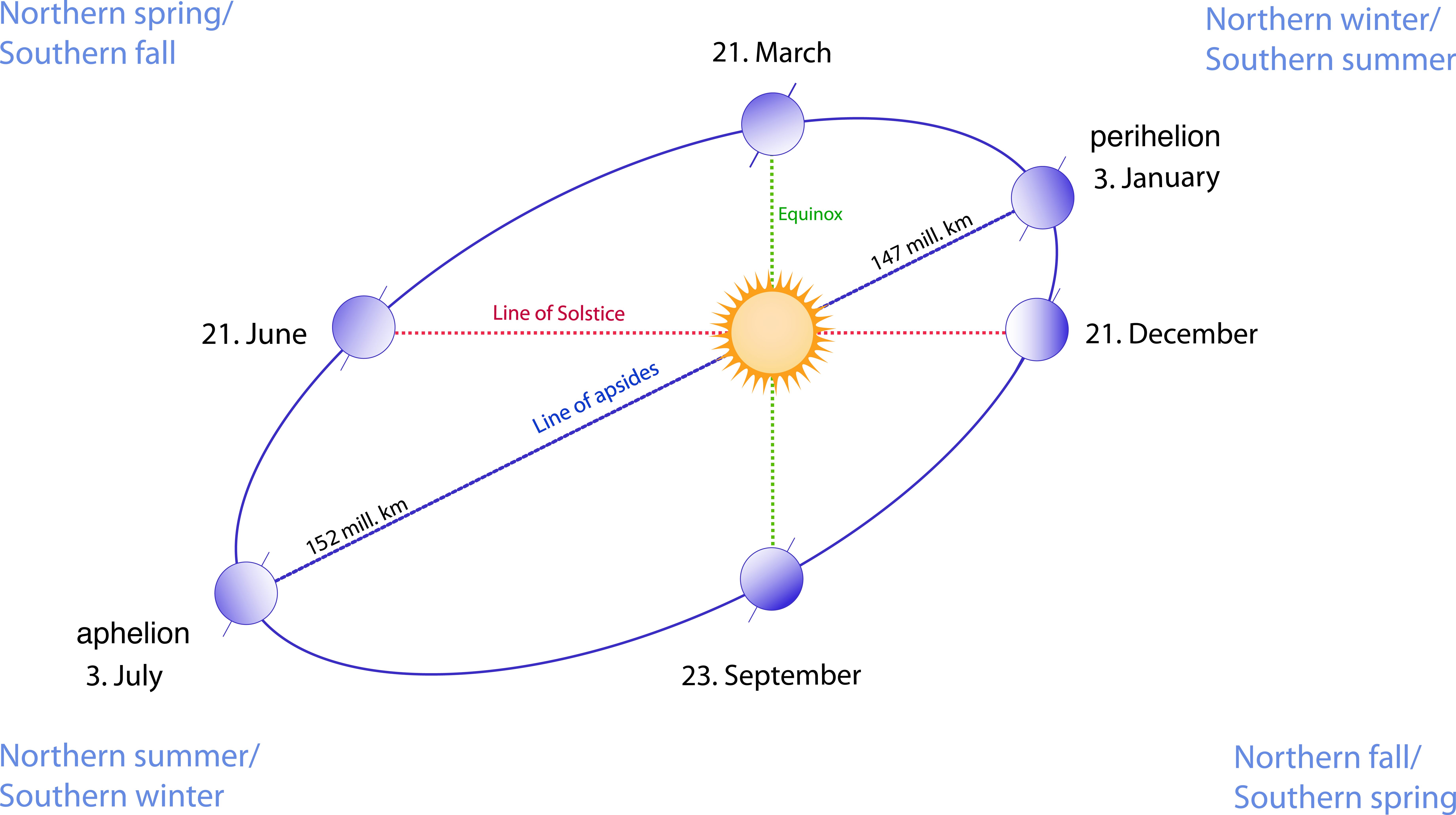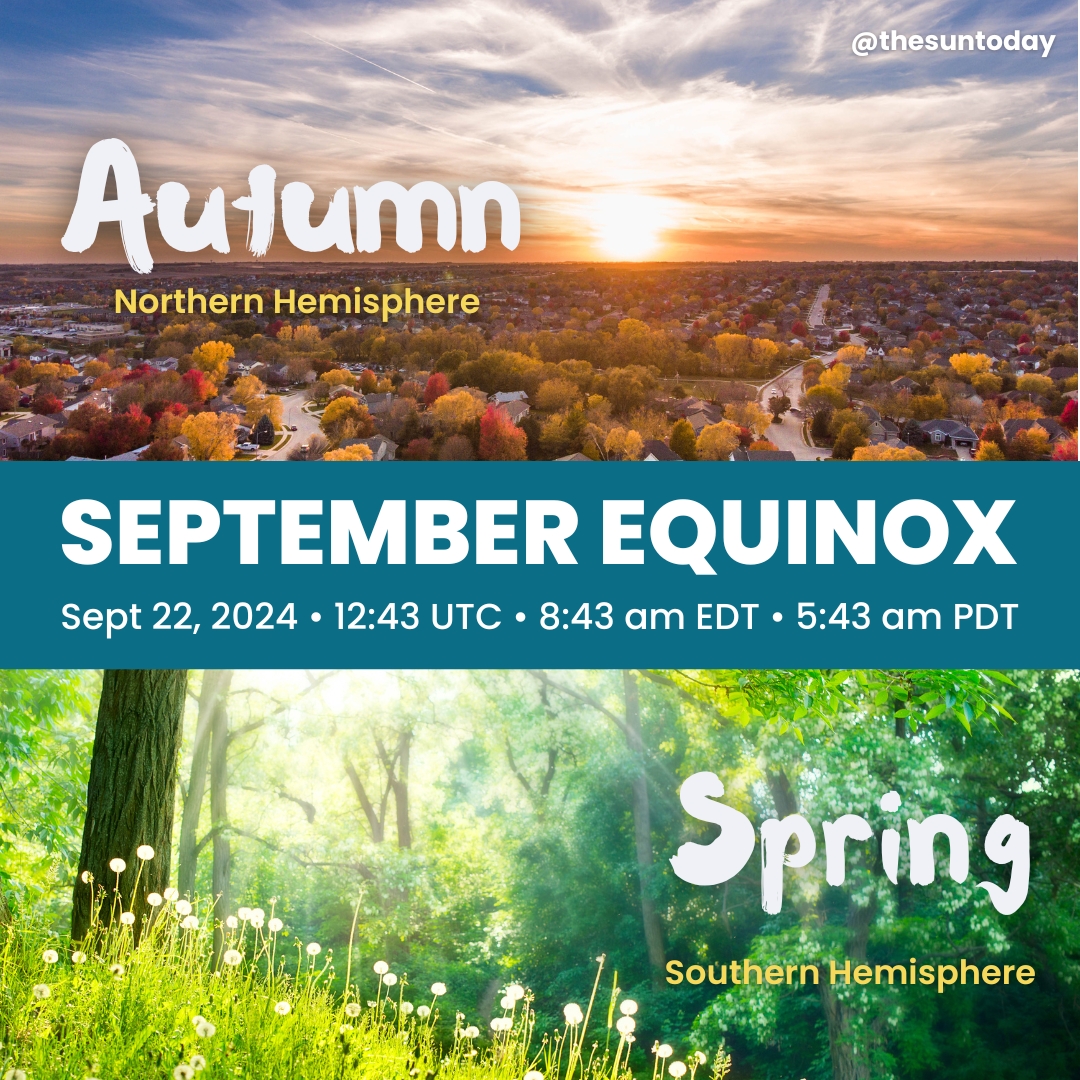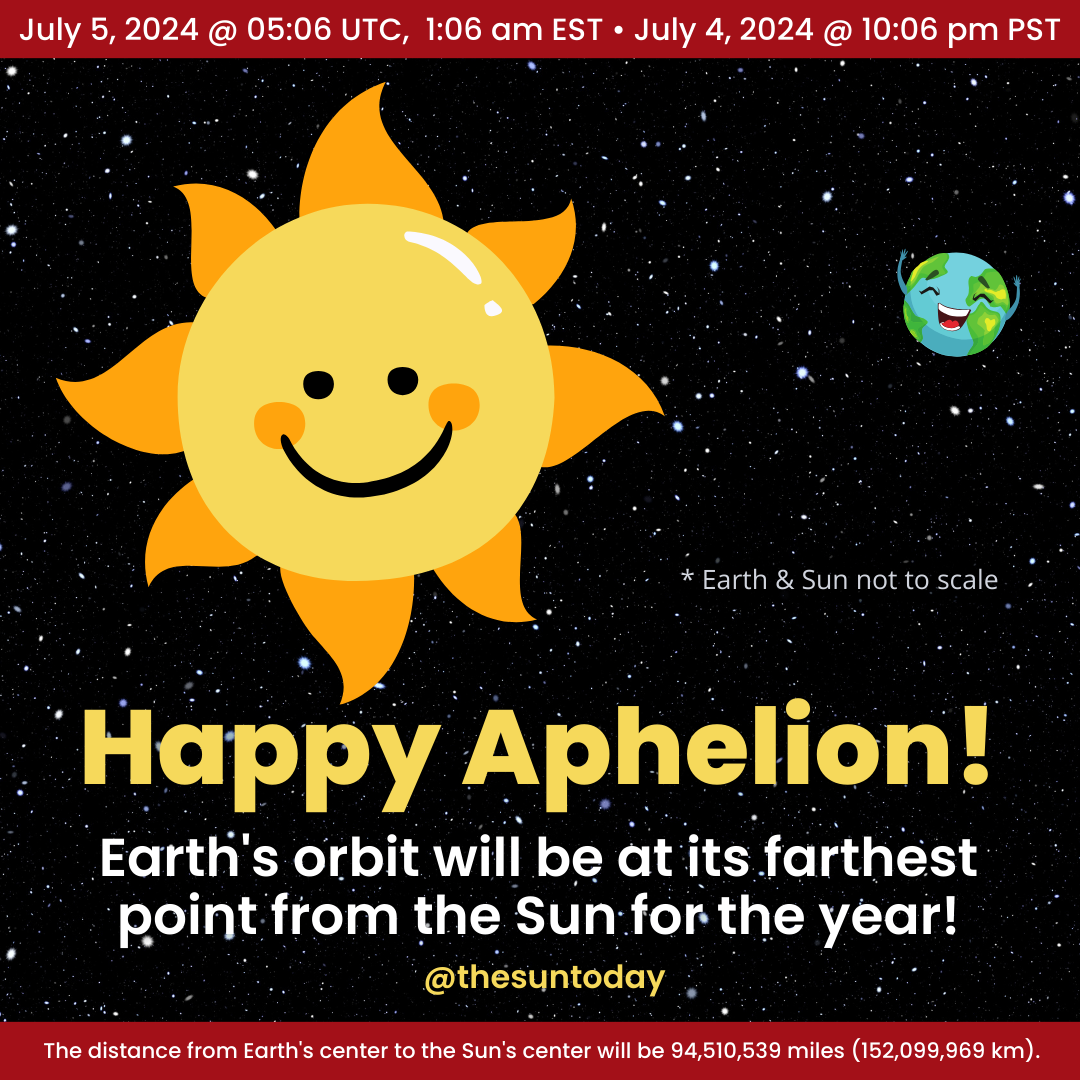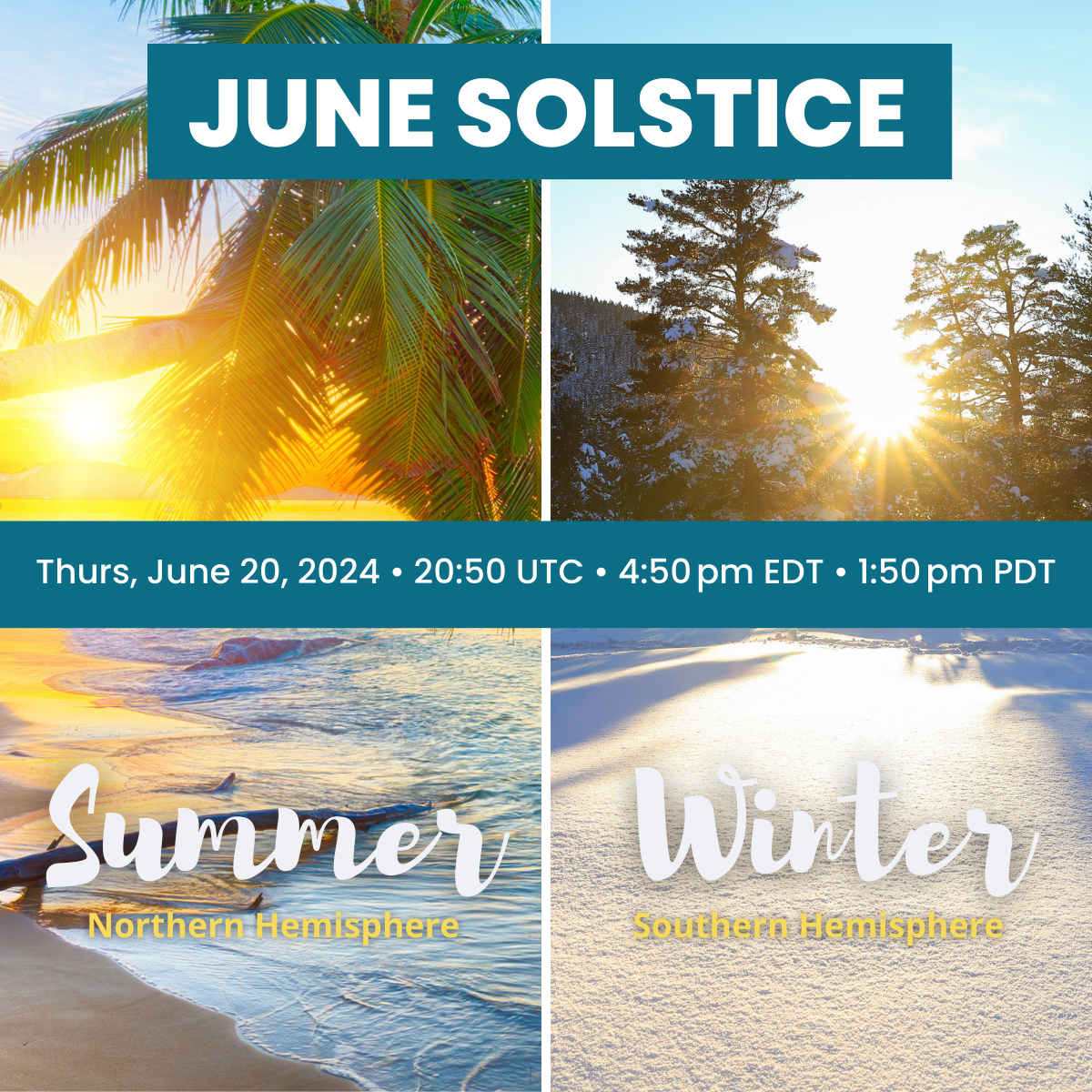

The December 2024 solstice starts the astronomical winter in the Northern Hemisphere and summer in the Southern Hemisphere.
Convert Your Timezone
For those in the Northern Hemisphere, this day will be the shortest of the year and have the longest night. The opposite is true for the Southern Hemisphere.
While the 2024 winter solstice has no particularly unique astronomical characteristics, this year is very special because just three days after the solstice on December 24, NASA’s Parker Solar Probe makes its historic closest approach to the Sun. The spacecraft will blaze through the solar corona at 430,000 miles per hour, a mere 3.83 million miles from the visible surface. This is not the first time it has traveled through the corona, but this will be the closest. This is also an exciting time because it’s collecting data during solar maximum.
During the solstice, societies have celebrated our life-giving Sun for thousands of years. Now we can celebrate the unique understanding of our star, the Sun, with the Parker Solar Probe!
The precise date of the December solstice can vary slightly each year, falling on December 20, 21, 22, or 23. However, December 21 and 22 are the most common dates. It occurs on Saturday, December 21, 2024, at 09:21 UTC (4:21 a.m. EST)
Quick Facts
Time and Date
- Date: December 21, 2024
- Time: 09:21 UTC (4:21 a.m. EST)
Astronomical Significance
- The sun will reach its southernmost point in the sky for the year.
- The North Pole will be tilted furthest away from the sun, causing sunlight to reach the Northern Hemisphere at a very shallow angle.
Day Length
- Northern Hemisphere: Shortest day and longest night of the year
- Southern Hemisphere: Longest day and shortest night of the year
Effects and Observations
Sun’s Path
- On the winter solstice, the sun will appear to take its lowest and shortest path across the sky in the Northern Hemisphere.
Noontime Shadow
- You’ll observe your longest noontime shadow of the year in the Northern Hemisphere.
Polar Regions
- North Pole: The sun will stay below the horizon for 24 hours.
- South Pole: The sun will be up for 24 hours.
Day Length Variations
- All locations south of the equator will have day lengths longer than 12 hours.
- All locations north of the equator will have day lengths shorter than 12 hours.
Watch the First Winter Sunrise at Stonehenge
For some solstice excitement, or at least a little connection to how some ancient people focused on the sun by watching this special sunrise, turn into the live feed from Stonehenge. It’s the first sunrise at Stonehenge after the Winter solstice.
Watch the Winter solstice sunrise LIVE from Stonehenge, wherever you are in the world, with this free live stream! Watch the sunrise over the Stone Circle as people celebrate.
- The stream begins at 07:30 GMT (this is 02:30 EST), with sunrise occurring at 08:08 GMT.
- You can convert from UTC to your local time by simply Googling it (e.g. “8 UTC in EST”) or try an online tool.

What are Solstices?
There are two solstices in a year, the June solstice (between June 20-22) and the December solstice (between December 20-23).
On the June solstice, the Sun reaches its highest point in the sky for an observer at the North Pole. On the December solstice, the Sun reaches its highest point in the sky for an observer at the South Pole. Solstices also mark the change from fall to winter or spring to summer.
The solstices happen because of the tilt of Earth’s axis of rotation with respect to its orbital path around the Sun. The axis of rotation is an imaginary line drawn straight through Earth connecting the North Pole to the South Pole. This line is tilted 23.5° from Earth’s orbital path around the Sun. This means that the Sun’s light does not hit the Earth evenly at a particular latitude above and below the equator. This tilt is the cause of Earth’s seasons.

During the solstices, Earth reaches a point where its tilt is at the greatest angle to the plane of its orbit, causing one hemisphere to receive more daylight than the other. (NASA/Genna Duberstein)

This diagram shows the relation between the line of solstice and the line of apsides of Earth’s elliptical orbit. The orbital ellipse (with eccentricity exaggerated for effect) goes through each of the six Earth images, which are sequentially the perihelion (periapsis—nearest point to the Sun) on anywhere from 2 January to 5 January, the point of March equinox on 20 or 21 March, the point of June solstice on 20 or 21 June, the aphelion (apoapsis—the farthest point from the Sun) on anywhere from 4 July to 7 July, the September equinox on 22 or 23 September, and the December solstice on 21 or 22 December. CREDIT
This means that the Sun’s light does not hit the Earth evenly at a particular latitude above and below the equator. This tilt is the cause of Earth’s seasons.
The equator is an imaginary line drawn right around Earth’s middle, like a belt. It divides Earth into the Northern and the Southern Hemispheres.
The imaginary lines around Earth that are parallel to the Equator are called lines of latitude. They are numbered from 0° to 90°. The one at 0° is the equator itself. The higher the number, the farther north (if it’s a + number) or south (if it’s a − number).
Because of Earth’s tilt is 23.5° the latitudes of +23.5° and −23.5° are special and have special names. The one in the Northern Hemisphere, +23.5° latitude, is called the Tropic of Cancer. The one in the Southern Hemisphere, − 23.5° latitude, is called the Tropic of Capricorn.
These are the latitudes where the Sun is directly overhead at noon once a year. In the Northern hemisphere, on the Tropic of Cancer, that is the June Solstice. In the Southern Hemisphere, on the Tropic of Capricorn, that is the December Solstice. These solstice days are the days with the most (for Summer) or fewest (for Winter) hours of sunlight during the whole year.

For the northern hemisphere, the Sun is directly overhead at “high-noon” on Summer Solstice at the latitude called the Tropic of Cancer.
The earliest sunset (Northern Hemisphere) or sunrise (Southern Hemisphere) does not come on the solstice!
The actual length of a day is based on many factors, including the rotation of the Earth, and does not equal exactly 24 hours. Watch the video (CREDIT: Pete Mangione, First Alert Weather Meteorologist at KPHO) below to learn about solar noon and how this impacts sunset & sunrise times. Or find out more about this at EarthSky. To find out the times of sunrise and sunset where you live check out Sunrise-Sunset.

The Seasons, Solstices, and Equinoxes
Science communicator Dr. James O’Donoghue creates amazing visuals. He created two visuals to illustrate the reasons for the seasons, solstices, and equinoxes.


CREDIT: Dr. James O’Donoghue

CREDIT: NASA images & animation by Robert Simmon, using data ©2010 EUMETSAT. Caption by Mike Carlowicz. Read more »
An analemma video created using images taken every 10 days at the same time from June 21, 2018 to June 7, 2019 (Updated version). Video by Marcella Giulia Pace and shared at Astronomy Picture of the Day

A new season is upon us! Depending upon where you live:
 OR
OR 




